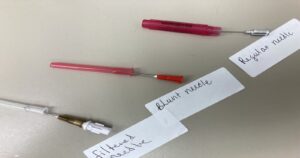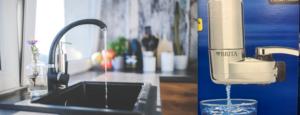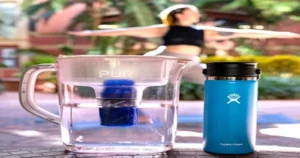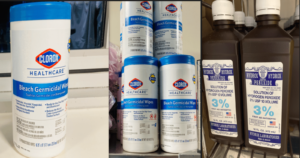Sand Filter is a tank filled with specially graded sand as the filtration medium where water is passes through the sand bed and the particles and impurities are trapped, allowing clean water to pass through. This type of water filtration system commonly used in swimming pools, water treatment plants
A cartridge filter is a type of filtration system consists of a cylindrical cartridge made of various materials such as paper, polyester, or other fibrous materials. When the fluid to be filtered passes through the cartridge, the impurities are trapped within the fibers of the cartridge, allowing only the clean fluid to pass through.
Sand Filter VS Cartridge Filter

Through this discourse, we aim to equip you with the knowledge and discernment necessary to make an informed choice that aligns with your distinct requirements. Let us now delve into the nuanced world of sand filters and cartridge filters, unveiling their virtues and limitations, as we strive to uncover the optimal solution for your filtration needs.
Differences between sand filters vs Cartridge filters
| Sand Filter | Cartridge Filter |
|---|---|
| Filtering Medium: Sand | Filtering Medium: Pleated Polyester Cartridge |
| Filtration: 20-40 Microns | Filtration: 10-15 Microns |
| Maintenance: Requires Backwashing and Replacing Sand Periodically | Maintenance: Periodic Cleaning and Replacement of Cartridges |
| Efficiency: Less Efficient at Lower Micron Levels | Efficiency: More Efficient at Lower Micron Levels |
| Water Clarity: Good | Water Clarity: Excellent |
| Initial Cost: Lower | Initial Cost: Higher |
| Installation Ease: Moderate | Installation Ease: Easy |
| Space Requirement: Requires more space | Space Requirement: Compact |
| Pressure Drop: Increases with Dirt Load | Pressure Drop: Increases with Dirt Load |
What is a Sand filter
A sand filter is a widely used method of water filtration that relies on a bed of specially graded sand to remove impurities and particles from water. This filtration process operates on the principle of mechanical straining and adsorption, making it a highly effective and cost-efficient means of water purification.
The operation of a sand filter involves water passing through the bed of sand, wherein suspended particles are trapped and retained. The sand’s irregular surface and porous structure create numerous points of contact, allowing for the physical entrapment of contaminants. Over time, as the filter accumulates impurities, it undergoes a process known as “head loss,” indicating that it’s time for maintenance.
Pool Sand Filter

One of the notable advantages of a sand filter lies in its durability and longevity. Properly maintained, a sand filter can last for several years, providing a reliable and consistent level of filtration.
Additionally, sand filters tend to have a higher flow rate capacity compared to other filtration methods, making them suitable for applications where a large volume of water needs to be processed.
However, it’s important to note that while sand filters are effective at removing larger particles, they may not be as efficient at capturing very fine contaminants or dissolved impurities. To address this limitation, additional treatment methods or combination with other types of filters may be necessary.
Sand filters offer a robust and proven solution for water filtration, particularly in applications where a steady flow of water needs to be treated for larger particles and sediment. Understanding their strengths and limitations is crucial in determining their suitability for specific water purification needs.
Benefits and Efficiency of sand filter
The efficiency of a sand filter depends on various factors including the quality of the filter media, the flow rate of water through the filter, and the size of particles being filtered out.
1. Particle Size Removal: Sand filters are most effective at removing particles in the range of 20 to 40 microns. They can also capture smaller particles to some extent, but their efficiency decreases as particles become finer.
2. Flow Rate: The flow rate of water through the sand filter can affect its efficiency. Higher flow rates may reduce the filter’s ability to capture particles effectively. It’s important to operate the filter within its recommended flow rate range.
3. Filter Media Quality: The quality and grading of the sand used in the filter play a crucial role in its efficiency. Properly graded and high-quality filter media will perform better than poorly graded or degraded sand.
4. Backwashing and Maintenance: Regular backwashing and maintenance of the sand filter are essential to maintain its efficiency. Over time, the filter media can become clogged with trapped particles, reducing its effectiveness. Backwashing helps clean the media and restore its filtering capacity.
5. Pre-treatment and Coagulation: Depending on the source water quality, pre-treatment processes like coagulation or flocculation may be used to enhance the efficiency of the sand filter. These processes help agglomerate smaller particles into larger ones, making them easier for the filter to capture.
6. Disinfection: While sand filters are effective at removing particles, they do not provide disinfection. For complete water treatment, a secondary disinfection step (such as chlorination, UV treatment, etc.) is typically required.
7. Limitations: Sand filters may not effectively remove very fine particles (less than 20 microns) or dissolved substances. In such cases, additional treatment methods may be necessary.
8. Application Specific: The efficiency of a sand filter can also depend on the specific application. For example, in swimming pools, the requirements for water clarity are different than in industrial processes or drinking water treatment.
5 Types of Sand Filters and they Uses
| Sand Filter Type | Best Use |
|---|---|
| High-Rate Sand Filter | Residential pools, small commercial pools, spas, and hot tubs |
| Diatomaceous Earth (DE) Filter | Large commercial pools, public pools, water parks, and aquatic facilities |
| Cartridge Filter | Above-ground pools, small to medium-sized residential pools, spas, and hot tubs |
| Zeolite Filter | Residential pools, saltwater pools, and environmentally conscious applications due to its low environmental impact |
| Media Filters (Glass or Crushed Glass) | Residential and commercial pools, particularly those looking for superior filtration and reduced water consumption |
How to Maintain pool Sand Filter
- Backwashing:
- Regular backwashing is the primary maintenance task for a sand filter. Backwashing involves reversing the flow of water through the filter to flush out accumulated debris and dirt from the sand bed. It’s essential to do this when the pressure gauge indicates a 7-10 psi increase over the clean, starting pressure.
- Check Pressure Gauge:
- Monitor the pressure gauge regularly to keep track of the filter’s pressure. A sudden increase in pressure could indicate that it’s time to backwash.
- Inspect the Multiport Valve:
- If your sand filter is equipped with a multiport valve, inspect it for any signs of leaks, cracks, or operational issues. Lubricate the valve’s O-rings if necessary.
- Check for Leaks:
- Inspect the filter tank, plumbing connections, and valves for any signs of leaks. If you find any, repair or replace the faulty parts promptly.
- Replace or Add Sand:
- Over time, the sand in the filter can become worn or compacted, reducing its effectiveness. Depending on the manufacturer’s recommendations, you may need to replace the sand every 5-7 years.
- Clean the Strainer Basket (if applicable):
- If your filter system has a strainer basket, regularly remove and clean it to prevent debris from clogging the pump.
- Inspect and Clean the Skimmer Basket:
- Debris that bypasses the skimmer and enters the filter can cause problems. Clean the skimmer basket regularly to ensure it’s functioning properly.
- Check the Pump and Motor:
- Inspect the pump and motor for any signs of damage, unusual noises, or leaks. Lubricate the pump’s motor if it has lubrication ports.
- Maintain Proper Water Chemistry:
- Regularly test and adjust the water chemistry to ensure it’s within the recommended parameters. Proper water chemistry helps prevent scale formation and other issues that could affect the filter.
- Winterization (if applicable):
- If you live in an area with freezing temperatures, make sure to properly winterize the filter system to prevent damage from freezing water.
- Inspect O-Rings and Gaskets:
- Check the O-rings and gaskets on the filter tank, multiport valve, and any other connections for signs of wear or damage. Replace them if necessary.
- Monitor Filter Media Condition:
- Keep an eye on the condition of the sand bed. If it becomes clumped, calcified, or shows signs of channeling (water bypassing the sand), it may need to be replaced or regraded.
Remember to consult your specific filter system’s manual for manufacturer-recommended maintenance procedures and intervals, as they can vary depending on the brand and model. Regular maintenance not only extends the lifespan of your sand filter but also ensures that your pool or water system remains clean and safe for use.
Things to Consider when evaluating the Use of a Sand Filter
- Particle Size and Type:
- Sand filters are effective at removing relatively large particles (e.g., sediment, debris), but they may not be suitable for filtering very fine particles or dissolved substances. The particle size should be within the range that the sand filter can effectively capture.
- Flow Rate:
- Sand filters have a specific flow rate capacity, which is the maximum flow of water they can handle while maintaining effective filtration. It’s crucial to ensure that the flow rate of the system matches the capacity of the sand filter.
- Maintenance Requirements:
- Sand filters require periodic maintenance, including backwashing to remove accumulated debris and clean the filter media. Consider the frequency and ease of maintenance, especially if the system needs to operate continuously.
- Compatibility with Fluid Characteristics:
- Sand filters work well with fluids that do not chemically react with or degrade the filter media. For instance, some aggressive chemicals or high-temperature fluids may not be suitable for sand filtration.
- Pre-treatment and Post-treatment:
- Depending on the application, pre-treatment (e.g., settling tanks, coagulation) and post-treatment (e.g., disinfection, pH adjustment) processes may be necessary to enhance the performance of the sand filter.
- Space and Installation Requirements:
- Consider the available space for installing the sand filter. It’s important to have sufficient area for the filter vessel and associated equipment.
- Regulatory Compliance:
- Ensure that the use of a sand filter complies with any local or industry-specific regulations or standards.
- Cost Considerations:
- Evaluate the initial cost of the sand filter, as well as ongoing operational and maintenance expenses. Additionally, consider the lifespan of the filter media and any replacement costs.
- Application-Specific Considerations:
- Different industries and applications may have specific requirements. For example, in swimming pools, the suitability of a sand filter may depend on factors like water chemistry, pool size, and bather load.
- Consultation with Experts:
- Engage with engineers, filtration specialists, or consultants who have experience with sand filtration to ensure the selected filter is appropriate for the specific application.
What is a Cartridge Filter


These filters, widely utilized in various industries, have witnessed significant improvements in efficiency, durability, and environmental sustainability. The introduction of advanced composite materials and cutting-edge manufacturing techniques has led to the development of filters with enhanced filtration capacities, capable of removing even finer particles from liquids and gases.
Additionally, the integration of smart technology and IoT connectivity has allowed for real-time monitoring and predictive maintenance, optimizing their performance and prolonging their lifespan. These innovations reflect a growing trend towards more sophisticated and eco-conscious filtration solutions in today’s rapidly evolving industrial landscape.
How well dose the Cartridge filter works
| Term | Description |
|---|---|
| Nominal Efficiency | For example, a filter with a nominal efficiency of 95% for 10 microns means it should capture approximately 95% of particles that are 10 microns in size. |
| Absolute Efficiency | Actual efficiency of a filter under specific test conditions, indicating the percentage of particles captured at a specified size. |
| Beta Ratio | Ratio of particles before and after filtration, indicating filtration effectiveness. |
| Micron Rating | Size of particles the filter is designed to capture with a specified efficiency. |
| Efficiency at Different Sizes | Variation in efficiency for different particle sizes. |
| Multi-layered Media Efficiency | Efficiency enhancement through multi-layered media with varying densities. |
| High-Efficiency Particulate Air (HEPA) Filters | Filters with extremely high efficiency, capable of capturing particles as small as 0.3 microns. |
The efficiency of a cartridge filter depends on various factors, including the type of filter media, design, and the specific application. Here is a general overview of cartridge filter efficiency ratings:
1. Nominal Efficiency: This is a rough estimate of a filter’s efficiency. It indicates the percentage of particles of a specified size that the filter is expected to capture. For example, a filter with a nominal efficiency of 95% for 10 microns means it should capture approximately 95% of particles that are 10 microns in size.
2. Absolute Efficiency: This refers to the actual efficiency of a filter, meaning the percentage of particles of a specified size that the filter captures under specific test conditions. For example, a filter with an absolute efficiency of 99.9% for 5 microns captures 99.9% of particles that are 5 microns in size.
Small table showcasing the absolute efficiency of a hypothetical filter for particles of various sizes:
| Particle Size (Microns) | Absolute Efficiency (%) |
|---|---|
| 1 | 99.5 |
| 3 | 99.8 |
| 5 | 99.9 |
| 10 | 99.7 |
| 20 | 99.6 |
3. Beta Ratio: It is the ratio of the number of particles of a certain size before and after filtration. For example, a beta ratio of 10 at a specified particle size indicates that for every 10 particles of that size entering the filter, only 1 passes through.
4. Micron Rating: This indicates the size of particles that the filter is designed to capture with a certain efficiency. For example, a filter with a 10-micron rating is designed to capture a high percentage of particles that are 10 microns or larger.
5. Efficiency at Different Particle Sizes: Filters may have different efficiency ratings for various particle sizes. For instance, a filter might be highly efficient at capturing larger particles but less effective at capturing smaller ones.
6. Multi-layered Media Efficiency: Some cartridge filters use multi-layered media with varying densities. This can enhance filtration efficiency by capturing particles at different stages within the filter.
7. High-Efficiency Particulate Air (HEPA) Filters: These are a specific type of cartridge filter known for their extremely high efficiency in capturing particles as small as 0.3 microns. They are commonly used in environments where air quality is critical, such as in cleanrooms and healthcare settings.
It’s important to note that the efficiency of a cartridge filter can be affected by factors like flow rate, pressure, and the condition of the filter itself. Therefore, regular maintenance and monitoring are crucial to ensure consistent performance. Additionally, when selecting a cartridge filter, it’s essential to consider the specific requirements of the application to choose a filter with the appropriate efficiency rating.
How to clean and maintain Cartridge Filter
Maintaining a cartridge filter is crucial for ensuring it operates efficiently and effectively. Below is a list of steps you can take to properly maintain a cartridge filter.
- Turn Off the System:
- Before beginning any maintenance, turn off the pool or spa pump to ensure safety.
- Release Pressure:
- Open the air relief valve on the filter to release any built-up pressure.
- Remove the Cartridge:
- Loosen the clamp or lock that holds the filter tank together.
- Carefully remove the cartridge element(s) from the tank. Be cautious not to damage the pleats.
- Inspect the Cartridge:
- Inspect the cartridge(s) for damage, tears, or signs of wear.
- Rinse the cartridge with a hose to remove debris. For deep cleaning, use a filter cleaner solution.
- Clean the Tank:
- Using a hose or pressure washer, clean the inside of the filter tank. Remove any debris, leaves, or dirt.
- Inspect O-Rings and Gaskets:
- Check the O-rings and gaskets for any signs of wear, cracks, or deterioration. Replace if necessary.
- Replace Cartridges (if needed):
- If the cartridges are heavily soiled, damaged, or have been in use for an extended period (typically 1-2 years), consider replacing them.
- Check for Leaks:
- After reassembling the filter, check for any signs of leaks around the tank and connections.
- Reassemble the Filter:
- Place the cleaned or new cartridges back into the tank.
- Secure the tank with the clamp or lock.
- Restart the System:
- Turn the pump back on and check for proper water flow and pressure.
- Check Pressure Gauge:
- Monitor the pressure gauge on the filter. When it reaches 8-10 psi higher than the initial reading, it’s time to clean the cartridges again.
- Regular Maintenance:
- Depending on usage, clean the cartridges every 3-6 months. If the filter is used frequently or in a high debris environment, more frequent cleaning may be necessary.
- Monitor Water Chemistry:
- Maintain proper water chemistry levels to reduce the load on the filter and extend the life of the cartridges.
- Keep the Area Around the Filter Clean:
- Ensure that there are no obstructions around the filter that could impede airflow or cause damage.
- Winterize (if applicable):
- If you live in an area with freezing temperatures, properly winterize the filter to prevent damage.
- Professional Inspection:
- Periodically, have a pool professional inspect the filter and its components to ensure everything is in good working order.
Remember to always follow the manufacturer’s recommendations and guidelines for your specific cartridge filter model, as maintenance procedures may vary slightly.
Advantages of Sand filter vs Cartridge Filter
Sand Filter
- Effective Filtration: Sand filters are highly effective at removing particles and debris from water, ensuring cleaner and clearer water output.
- Low Maintenance: They require relatively low maintenance compared to other filtration systems. Routine backwashing and occasional sand replacement are typically the main maintenance tasks.
- Longevity: With proper care and maintenance, sand filters can last for many years, providing consistent filtration performance.
- Cost-Effective: Initial installation costs for sand filters are often lower compared to other filtration systems, making them a cost-effective option for many applications.
- Versatility: Sand filters can be used for various water sources and applications, including swimming pools, drinking water treatment, and industrial processes.
- Simple Operation: Sand filters are easy to operate and require minimal technical knowledge, making them suitable for both residential and commercial use.
- Environmentally Friendly: Sand filters use natural sand as the filtration medium, making them environmentally friendly compared to some chemical-based filtration methods.
- High Flow Rates: Sand filters can handle high flow rates, making them suitable for applications requiring high-volume water filtration.
Cartridge filters
Cartridge filters are widely used in various industries and applications to remove impurities from liquids and gases. Here are some of the key suitability factors for cartridge filters:
- Particle Size Removal: Cartridge filters are effective at removing a wide range of particle sizes, depending on the micron rating of the filter cartridge. They can capture particles ranging from large debris to sub-micron particles.
- High Efficiency: They offer high filtration efficiency, especially for fine particles. This makes them suitable for applications where strict filtration standards are required.
- Versatility: Cartridge filters can be used in a wide range of applications including water treatment, chemical processing, pharmaceuticals, food and beverage, oil and gas, electronics, and more.
- Ease of Installation and Maintenance: Cartridge filters are relatively easy to install and replace. They don’t require specialized skills or equipment for maintenance.
- Compact Design: Cartridge filters are typically more compact compared to other filtration systems like bag filters or sand filters. This makes them suitable for applications where space is limited.
- Long Service Life: Cartridge filters can have a relatively long service life, especially when used for the appropriate applications and when proper maintenance is performed.
- High Flow Rates: Some cartridge filter designs are capable of handling high flow rates, making them suitable for applications where a large volume of fluid needs to be filtered quickly.
- Chemical Compatibility: Cartridge filters can be constructed from a variety of materials (e.g., polypropylene, stainless steel) which makes them compatible with a wide range of chemicals. This makes them suitable for use in different chemical processing applications.
- Temperature Resistance: Depending on the construction material, cartridge filters can handle a wide range of temperatures, making them suitable for both hot and cold process streams.
- Reduced Contamination Risk: Cartridge filters are typically designed to minimize the risk of contaminating the filtered media. This makes them suitable for applications where maintaining product purity is critical.
- Customization: Cartridge filters can be customized based on specific application requirements, including different materials, sizes, and configurations.
- Environmentally Friendly: Cartridge filters can often be disposed of or recycled in an environmentally responsible manner.
It’s important to note that the suitability of a cartridge filter for a specific application will depend on factors such as the type of fluid being filtered, the desired level of filtration, flow rates, temperature, chemical compatibility, and other specific requirements of the application.
Limitations of Sand Filter vs Cartridge Filter
Limitations of sand filter
| Limitations | Sand Filter |
|---|---|
| Particle Size Limitation | Effective at removing larger particles; may struggle with very fine particles or dissolved substances |
| Limited Filtration Efficiency | Limited capacity to remove smaller particles, microorganisms, and dissolved substances |
| Maintenance Intensive | Require regular backwashing and occasional media replacement |
| Pressure Drop | Accumulated particles can cause an increase in pressure drop across the filter |
| Chemical Compatibility | Some chemicals may degrade the filter media |
| Temperature Range | Extreme temperatures can affect performance |
| Suitable for Turbid Water | May require pre-treatment for extremely turbid water |
| Limited Application | Versatile but may not be suitable for specialized applications |
| Space Requirements | Can be large and require significant space |
| Limited Lifespan | Media can wear out over time, requiring periodic replacement |
| Energy Consumption | Backwashing and maintenance can consume energy |
| Desalination | Generally not suitable for desalination of seawater |
| Hazardous Materials | – |
| Initial Cost | – |
| Waste Generation | – |
Limitations of Cartridge filter
| Limitations | Cartridge Filter |
|---|---|
| Particle Size Limitation | Limited range of particle sizes they can effectively remove; larger pores may not capture smaller particles effectively |
| Limited Filtration Efficiency | Finite capacity for holding particulate matter |
| Maintenance Intensive | Require regular cleaning or replacement |
| Pressure Drop | Accumulated particles can lead to an increase in pressure drop across the filter |
| Chemical Compatibility | Not all cartridges are compatible with all types of fluids or chemicals |
| Temperature Range | May have temperature limitations |
| Suitable for Turbid Water | – |
| Limited Application | Versatile but may not be suitable for all fluids or chemicals |
| Space Requirements | – |
| Limited Lifespan | Require regular replacement |
| Energy Consumption | – |
| Desalination | – |
| Hazardous Materials | Special precautions may be required for handling hazardous materials |
| Initial Cost | Higher initial costs may be incurred compared to some other filtration methods |
| Waste Generation | Disposal of used filters can be an environmental concern, especially if used for hazardous substances |
These table provides a quick overview of the key limitations associated with each type of filter, helping users make informed decisions based on their specific requirements and constraints.
Resources
https://www.evoqua.com/en/evoqua/products–services/filtration-systems/sand-filters/









